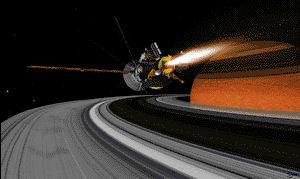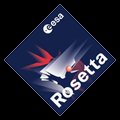Home Pages of Some Solar System Exploration Missions
Venus Express
Venus Orbiter. Launched November 2005. Arrived April 2006. | ||||||||||||
Mars Reconnaissance Orbiter
A heavy duty orbiter with high data tranmission capacity, and high resolution imaging capacity. The biggest spacecraft so far sent to Mars. Launched August 2005. Arrived March 2006. | ||||||||||||
Mars Exploration Rovers
A pair of NASA Rovers on course on opposite sides of the planet. Extensive treks across the surface. Copious amounts of imagery and data being returned. Evidence for surface water on Mars for extended periods in the past.
| ||||||||||||
Mars Express
An orbiter and a lander. The European Space Agency's first mission to Mars. Launched from Earth: 6th June 2003. Arrived Mars: 25th December 2003. Orbiter successfully placed in orbit. Contact lost with lander. | ||||||||||||
Mars Odyssey
Launched from Earth in April and arrived Mars in October 2001. Successfully entered orbit and began monitoring radiation levels, mapping minerals, and searching for water. Has detected vast reservoirs of sub-surface water. Mars Odyssey continues to send back a copious stream of data. | ||||||||||||
 Mars Global Surveyor
Mars Global SurveyorAfter entering orbit in September 1997, Mars Global Surveyor has continued to return an unprecedented amount of data regarding Mars' surface features, atmosphere, and magnetic properties. With its laser altimeter Mars Global Surveyor has created the most accurate topograpic map so far constructed for a whole planet. | ||||||||||||
 Cassini
CassiniLaunched 1990. Arrived July 2004. The Cassini orbiter will study Saturn and its moons for the next few years. The Huygens probe parachuted to the surface of the moon Titan in October 2004. | ||||||||||||
Messenger
| ||||||||||||
Hayabusa mission to Asteroid Itokawa
| ||||||||||||
Deep Impact
| ||||||||||||
Stardust Launched February 1999. Photographed and collected samples from Comet Wild 2 in January 2004. Return samples to Earth in January 2006. Crashed on re-entry through atmosphere. Intact samples were recovered. | ||||||||||||
 Rosetta
RosettaLaunched February 2004. Will arrive Comet Churyumov-Gerasimenko in November 2014 Will orbit the comet for two years. Will set down a lander on the comet's surface. | ||||||||||||
 NEAR
NEARThe mission of the Near Earth Asteroid Rendezvous (NEAR) spacecraft was to orbit the asteroid Eros for one year. NEAR was launched from Earth in February 1996. Main rocket trouble resulted in it missing its initial course. A new trajectory was devised and NEAR entered orbit around Eros on the 14th February 2000. Twelve months later, it settled on the surface of the asteroid. In between times, it sent back unprecedented deatail about the surface and composition of the asteroid. | ||||||||||||
Galileo A mission to study Jupiter's atmosphere, satellites, and surrounding magnetosphere. The spacecraft was launched in October 1989 and arrived at Jupiter in December 1995. It performed an extended study of Jupiter and its moons, making numerous discoveries, including the existence of an ocean of water under the icy crust of the moon Europa. It far outlived its design life. Because its systems were beginning to fail, it was deliberately slammed into Jupiter in September 2003 to avoid the possibility of accidently contaminating Europa's ocean. | ||||||||||||
 SOHO
SOHOThe Solar and Heliospheric Observatory (SOHO) is jointly operated by the European Space Agency (ESA) and NASA. It has had an uninterrupted view of the Sun from its orbit around an Earth-Moon Lagrangian point since 1995. This extended mission continues to return extraordinary detail, in multiple wavelengths, about the activity of the Sun's surface and atmosphere. | ||||||||||||
 Ulysses
UlyssesThis European Space Authority craft is in orbit over the North and South poles of the Sun. It is able to study the Sun from angles unattainable from Earth. It is returning data about the nature and extent of the solar wind. | ||||||||||||
 Deep Space
Deep SpaceNetwork NASA has set up ground stations in Australia and Spain, as well as the USA to maintain constant contact with solar exploration spacecraft. | ||||||||||||
NASA Space Science
|
Michael Gallagher
Last updated: June 2007